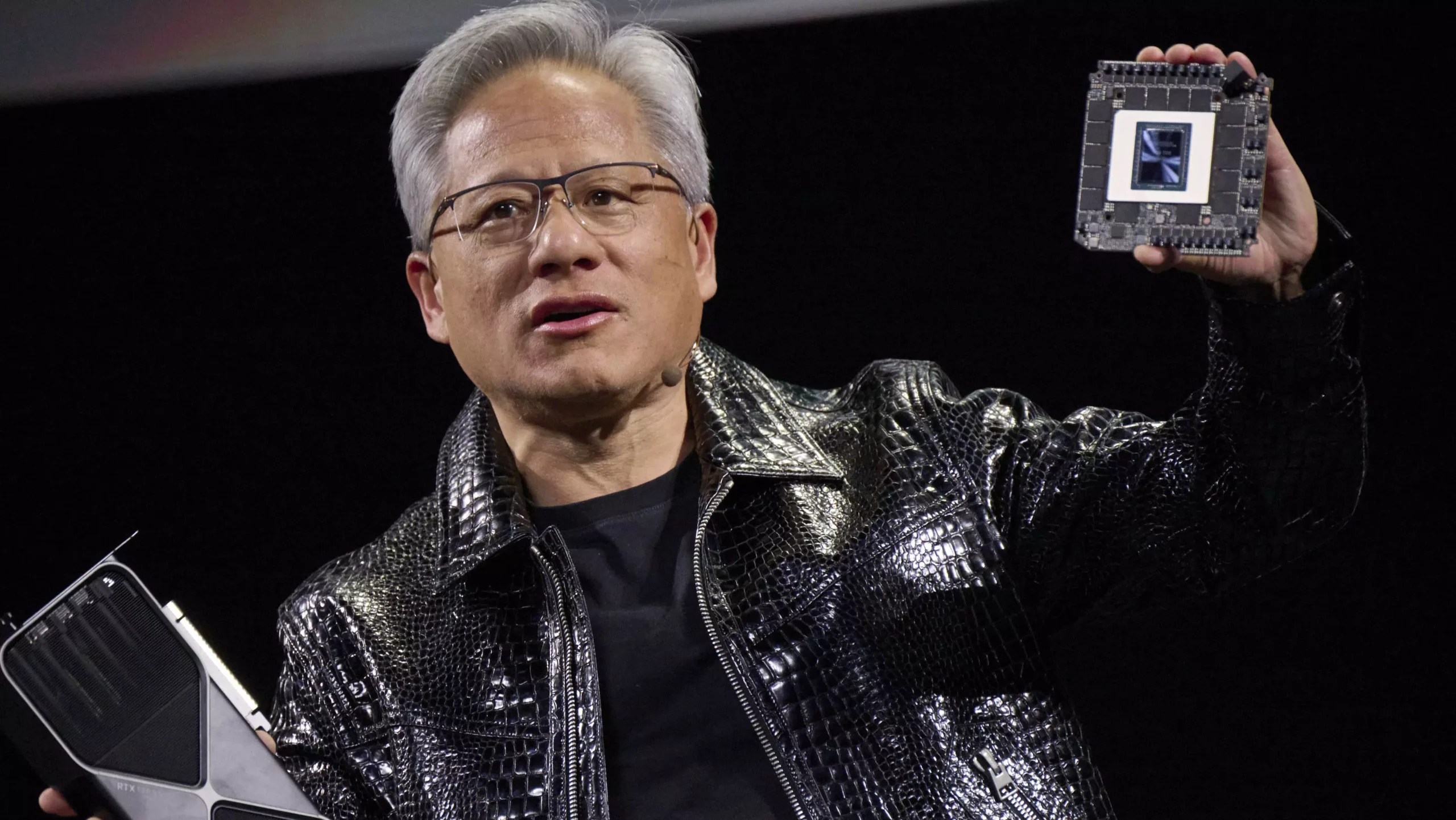As the world becomes increasingly intertwined through technology, the relationship between major tech companies and governmental policy is under more scrutiny than ever. Jensen Huang, the CEO of Nvidia, epitomizes this intersection, particularly in the context of the Trump administration’s proposed alterations to chip export regulations. His remarks reveal a tension wherein he advocates for broader access to American technological advancements while simultaneously acknowledging the geopolitical stakes of competition, especially with China. This necessitates a nuanced understanding, as trade policies are no longer just economic matters but also battlegrounds for technological supremacy.
Industry leaders like Huang are not only concerned with advancing their companies but also must grapple with the implications of government regulations on their global strategies. Huang’s assertion to Bloomberg underscores an urgency for a policy framework that reflects the current reality of international dynamics and technological advancements. By calling for a more relaxed approach to exports, he challenges the administration to strike a balance between safeguarding national interests and ensuring that American technology continues to flourish on the global stage.
The Implications of the Diffusion Rule
At the center of this dialogue is the proposed Diffusion rule. This policy aims to categorize countries based on their eligibility to receive American-made chips. However, if the Trump administration were to pivot from this framework to a licensing model, the complexity of navigating exports would increase significantly. Huang’s argument—that this licensing requirement could ultimately hinder the pace of innovation—draws attention to the potential negative repercussions of such policies. By imposing stricter controls, the administration may unintentionally stifle companies’ ability to support ongoing global advancements in artificial intelligence.
Yet, the risks associated with more open exports cannot be overlooked. The reality of technology transfer, particularly to nations like China, forces a reconsideration of Huang’s enticing proposition. Exporting chips may enhance Nvidia’s market presence, but it could also fuel rivals in a rapidly evolving race for AI dominance. This duality creates a precarious balance: while sharing advanced technology could accelerate innovation, it also opens doors for adversaries to catch up, or even overtake, the U.S. in critical sectors.
The AI Arms Race: Competing on a Global Scale
Huang’s remarks underscore the urgency of the competition between the United States and China in the realm of artificial intelligence. With a significant portion of the world’s AI research talent based in China, the stakes have never been higher. Huang aptly points out that there is no finish line in this race; it is a continuous battle for supremacy that requires constant vigilance and adaptation. However, the question remains: are tighter export controls the answer to maintaining that competitive edge?
There is an argument to be made for the perspective that limiting exports could inadvertently create barriers that hinder U.S. companies from reaching their full potential. If America is to lead in AI technology, controlling the flow of chips and expertise might only isolate the industry, leading to missed opportunities for collaboration and advancement. The current environment calls for an ambitious strategy that encourages innovation while maintaining a degree of protectionism rooted in national security concerns.
The Reality of Global Supply Chains
Moreover, one cannot ignore the complexities of the global supply chain that impacts chip production. Nvidia, while a leading figure in the industry, relies heavily on external manufacturing partners, such as Taiwan’s TSMC. This relationship highlights the irony of an ‘America-first’ strategy in a landscape where the components vital for achieving AI supremacy are made far from U.S. shores. The pledge by TSMC to bolster its American production capabilities with a hefty investment is promising, yet it does not immediately alleviate reliance on foreign manufacturing for high-performing chips.
The expectation that Nvidia’s technological achievements can be wholly framed as American innovation skirts the complexity of global production networks. The centrality of multiple nations in developing cutting-edge technology challenges the narrative of unilateral American dominance in the industry. It is simplistic and, frankly, misleading to equate the sales of these chips solely with national pride without acknowledging the broader international collaborations that contribute to their creation.
The Profit Motive Behind Policy Advocacy
At the heart of policy discussions is the recognition that economic considerations often drive technological decisions. For Nvidia, soaking up additional export revenue represents an essential pathway toward sustaining growth. As Huang advocates for less restrictive policy measures, one must acknowledge the underlying motivation: the pursuit of profits. While promoting a narrative of community development through technology diffusion, it is also crucial to recognize that corporate interests play a vital role that cannot be overlooked.
These intertwined motivations underscore the necessity for a well-rounded approach to policy-making, which considers both the competitive landscape and the nuances of global interdependence. The ultimate challenge lies in crafting policies that foster innovation and fairness, rather than reinforcing barriers that stifle progress. As we navigate this complex interplay, a multifaceted dialogue must persist to ensure that tech leaders and policymakers collaboratively shape a future that embraces opportunity while safeguarding national interests.


Leave a Reply